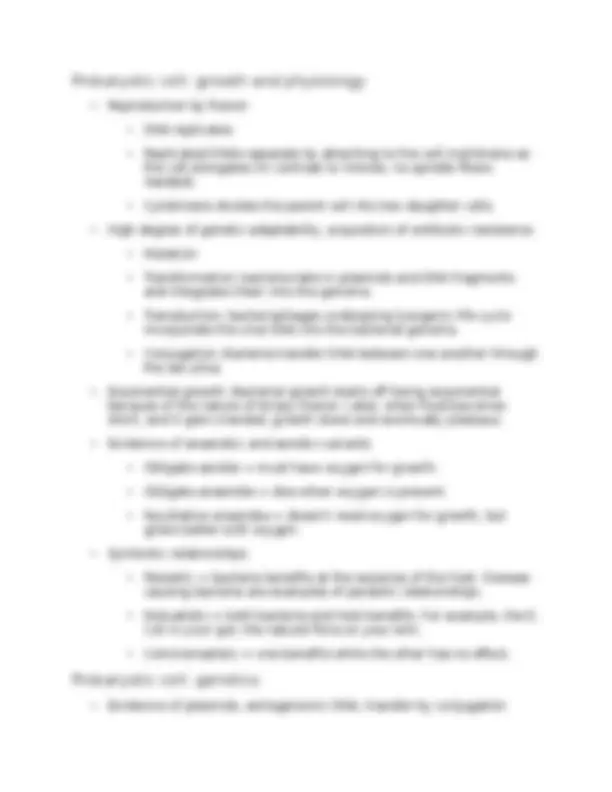





Study with the several resources on Docsity

Earn points by helping other students or get them with a premium plan


Prepare for your exams
Study with the several resources on Docsity

Earn points to download
Earn points by helping other students or get them with a premium plan
Community
Ask the community for help and clear up your study doubts
Discover the best universities in your country according to Docsity users
Free resources
Download our free guides on studying techniques, anxiety management strategies, and thesis advice from Docsity tutors
An overview of the general characteristics, structure, and life cycles of fungi and viruses. Topics include the role of hyphae filaments and mycelium in fungi, the nucleic acid and protein structure of viruses, and the stages of the viral life cycle. Additionally, the document covers the differences between prokaryotic and eukaryotic cells, including their growth and physiology.
What you will learn
Typology: Study Guides, Projects, Research
1 / 6

This page cannot be seen from the preview
Don't miss anything!



